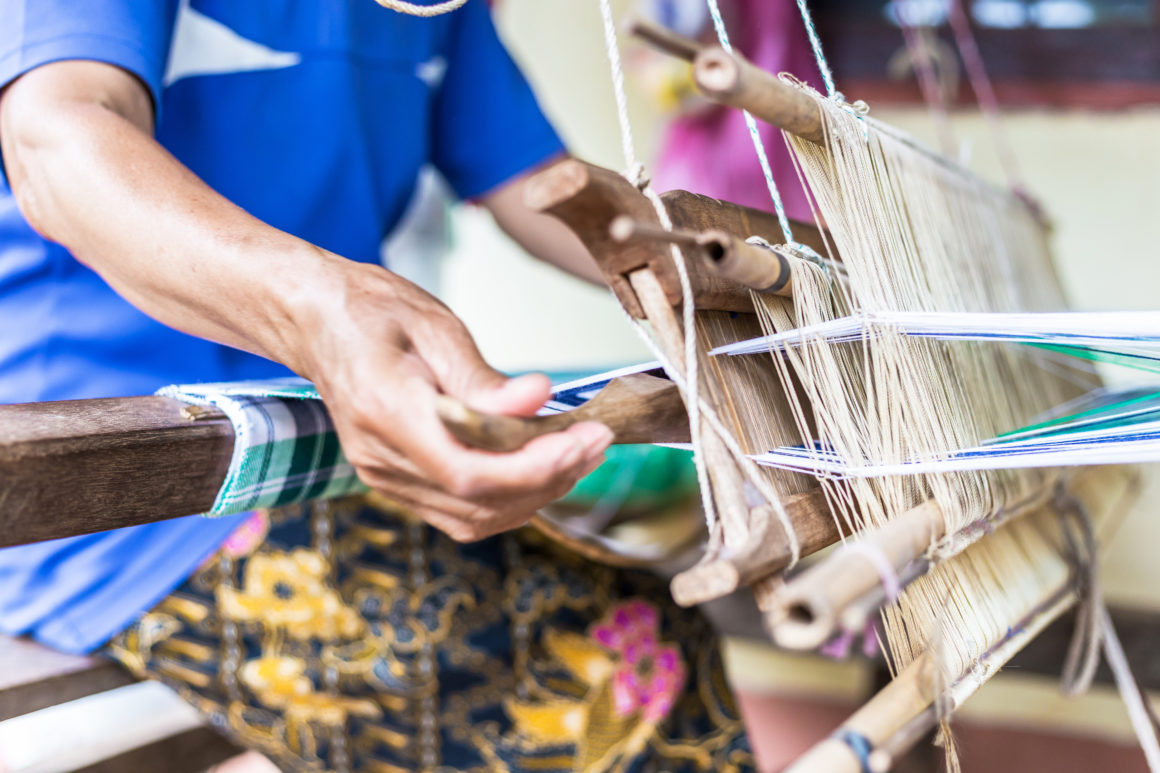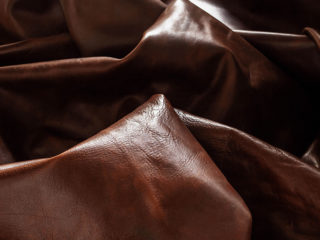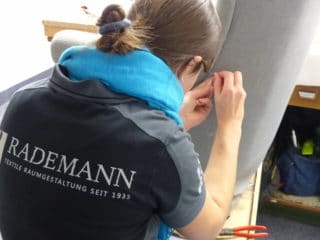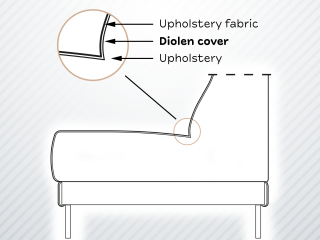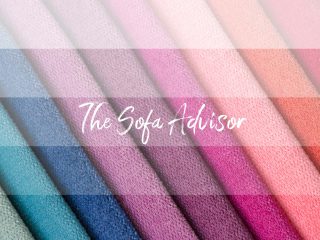Overview
In the beginning was the branch
The production of fabrics by spinning and weaving is one of the oldest handicraft techniques of mankind and is closely connected with the development of our society. Even the Stone Age people intertwined twigs to make various utensils.
The need for more flexible materials gave rise to techniques for processing plant fibers and hair into long threads: spinning was invented. These flexible fibers could be joined together in various ways. This was also the origin of weaving, in which, unlike braiding, for example, two threads are crossed at right angles to each other.
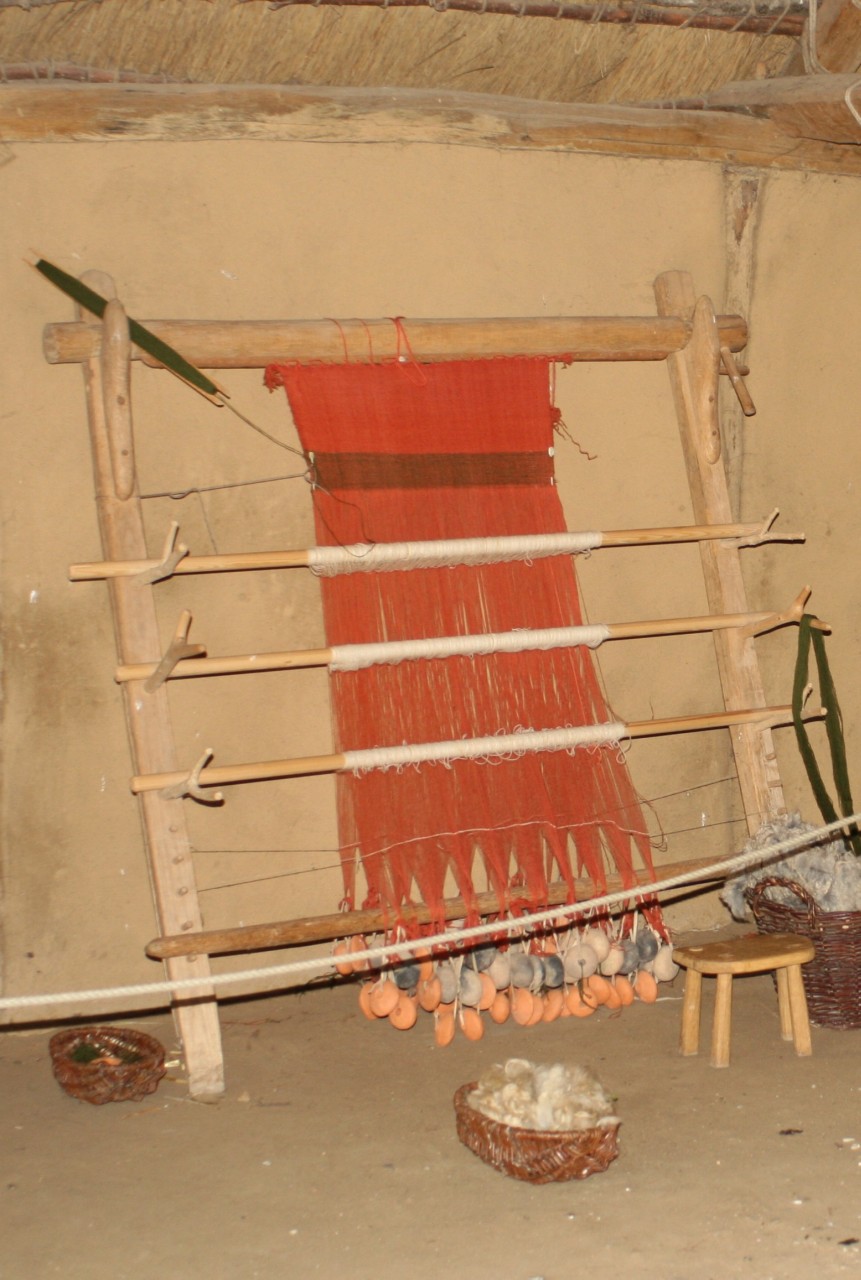
At the latest in the Neolithic Age, people had developed constructions that facilitated their work of weaving. In the so-called weight loom, a group of threads was tied vertically in an almost vertical framework. At the bottom, the threads were weighted with stones to keep them taut. To weave the transverse thread (= weft) between the longitudinal threads (= warp), one walked back and forth in front of the frame.
The vertically placed weight loom is the earliest type of high loom. In addition, there were also horizontally placed flat looms: Around 2000 BC, Egyptian wall paintings depicted women weaving, squatting on the floor next to such a loom. The longitudinal threads were guided over 2 beams and the beams were stuck into the ground with 2 pegs each so that the basic threads were kept under tension.
Fabric production – weavers as intellectual elite
Considering the simplicity of the technical tools available, even today one can only marvel at the elaborate patterns and fine fabrics produced by the weavers of antiquity. In ancient Greece, for example, the simple weight loom was in use. Nevertheless, the women – because weaving was a female domain at that time – produced the most gossamer fabrics, which can hardly be produced with today’s highly developed and computer-controlled looms.
Today, such fabrics would cost a fortune simply because of the ultra-fine yarn required as the basic material. At that time, weavers worked for many months, possibly even years, on a single garment. Of course, such noble covers could only be afforded by particularly wealthy and high-ranking people.
However, the weavers needed not only extreme diligence and a great deal of dexterity, but also an immense amount of concentration and artistic design ability. For the sometimes extremely elaborate, filigree patterns, the threads had to be crossed in a highly artistic and planned manner. It is therefore not surprising that weaving was a symbol of human intelligence in ancient times. The social standing of the weavers was correspondingly high. In ancient mythology, weaving is described as an activity worthy of the goddess.
Wool in abundance – new materials revive the weaving business
Over the centuries, spinning and weaving techniques were further developed. The first treadle looms allowed the warp threads to be raised or lowered in a planned manner so that the weft thread could be threaded through more quickly and without errors.
Around the 13th century, the spinning wheel was invented. This allowed more effective yarn production and eliminated a supply bottleneck in fabric manufacturing. This was because yarn made from flax or wool was until then a scarce raw material due to the extremely labor-intensive spinning process.
From the 14th century, cotton was imported from the Orient to Europe – in Germany for the first time by the Augsburg merchant Johannes Fugger. The fabrics made from it were initially so expensive that only the wealthiest citizens could afford them. And the previously poor linen weaver family Fugger soon belonged to this high society. The cotton business took off.
But it was not until spinning machines were developed at the end of the 18th century that cotton, which was short-fibered and therefore slow to spin, became affordable. Around the same time, Scottish settlers in Australia and New Zealand began raising sheep. Their huge herds soon supplied the whole world with previously unimagined quantities of wool and gave weaving a further boost.
Shirts for all – industry displaces craftsmanship
Unfortunately, the weavers themselves did not benefit much from the flourishing of weaving. The onset of the industrial revolution deprived them of their economic basis. Until then, the weaving trade had provided work for many people. Now, fabric production was taken over by machines. Great poverty and social uprisings were the result and characterized social life in the 19th century.
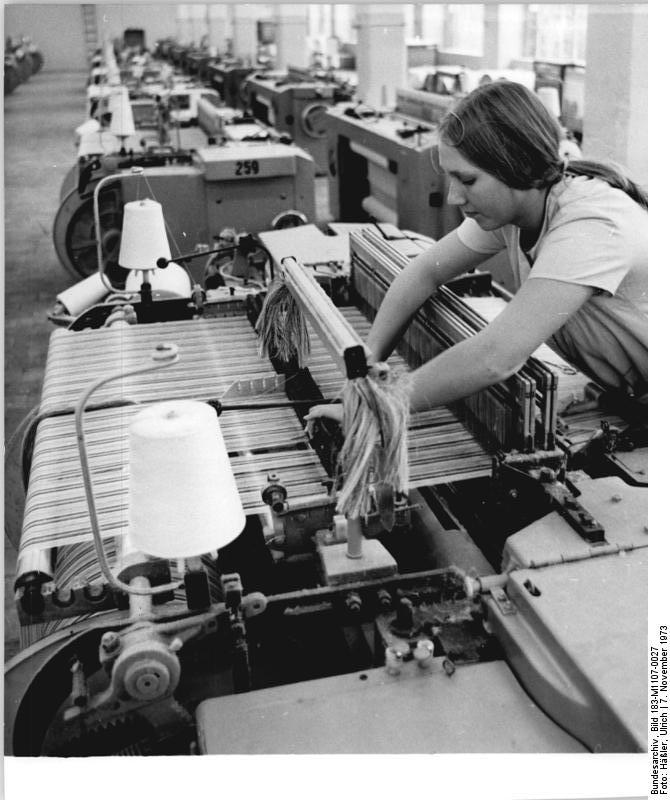
Photo: lrich HÄSSLER / Wikipedia
It took generations until the increase in productivity and reduction in prices achieved with industrialization restored economic and social equilibrium and led to greater prosperity for (almost) everyone.
Yarns from the laboratory – the development of synthetic fibers
In the 20th century, textile manufacturing underwent another revolution with the development of synthetic fibers. The scientific basis for this was provided by the German chemist Hermann Staudinger, who decoded the molecular chain structure of natural fibers in 1925. For it was only knowledge of the blueprint of natural fibers that made their imitation in the laboratory possible.
In 1935, American chemists succeeded in synthetically producing a spinnable polyamide. Five years later, the world-famous nylon stockings came onto the market. Only a short time later, the German chemist Paul Schlack independently developed perlon, also a type of polyamide. From then on, synthetic fibers revolutionized the textile market and, because of their excellent durability and hard-wearing properties, it is now impossible to imagine the furniture fabrics sector without them.
In addition to pure synthetic fibers, blended fabrics are also used, combining the advantages of synthetic fibers with those of natural fibers.
